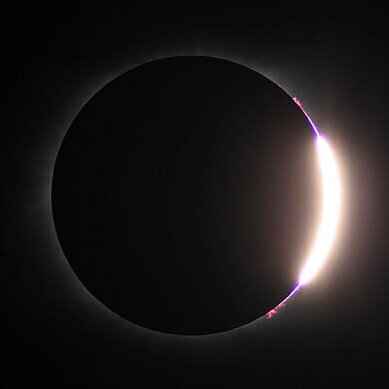On April 8, 2024, a total solar eclipse will be visible across the United States. This astronomical event is only possible because of the relative sizes and distances of our sun and moon; a sun and moon created by God for us to see. It is an opportunity to experience wonder and awe at the Creator speaking to us through His Creation. As the psalmist sings, “The heavens declare the glory of God; the firmament proclaims the works of his hands. Day unto day pours forth speech; night unto night whispers knowledge. (Psalm 19: 1-3)”
In this lesson, students will have an opportunity to wonder about the significance of this year’s solar eclipse in light of the liturgical Solemnity of the Annunciation of the Lord. The Annunciation is usually celebrated on March 25th, but this year, because of the Holy Week and the Easter Octave, it is celebrated on April 8th. Students will reflect on the significance of this conjunction of events.
In this lesson, your students will:
- Learn about the conditions for a total solar eclipse.
- Contemplate how God uses astronomical events in Salvation History.
- Discuss how the solar eclipse and the Solemnity of the Annunciation of the Lord can help us see the majesty of God’s plan for us.


